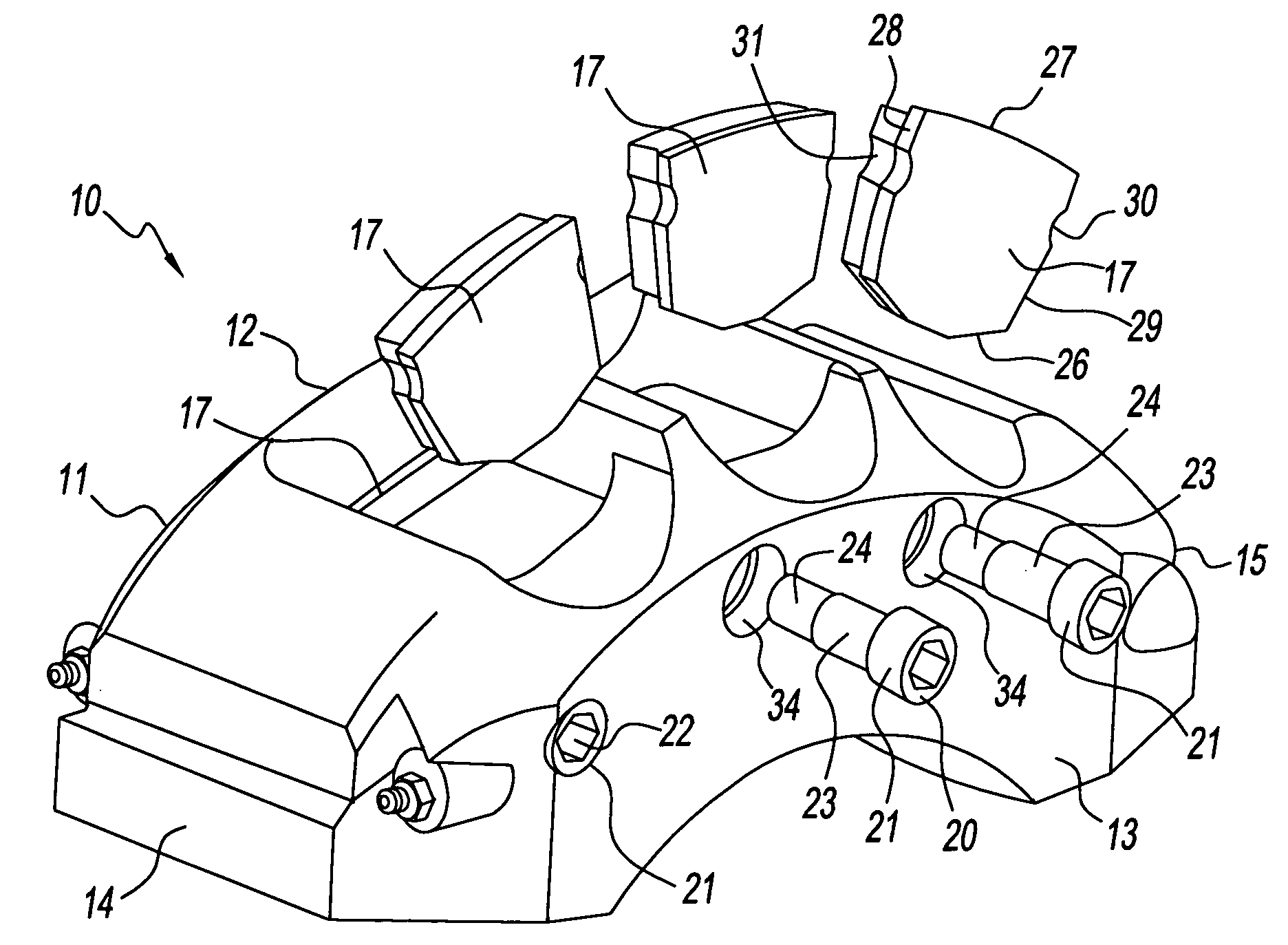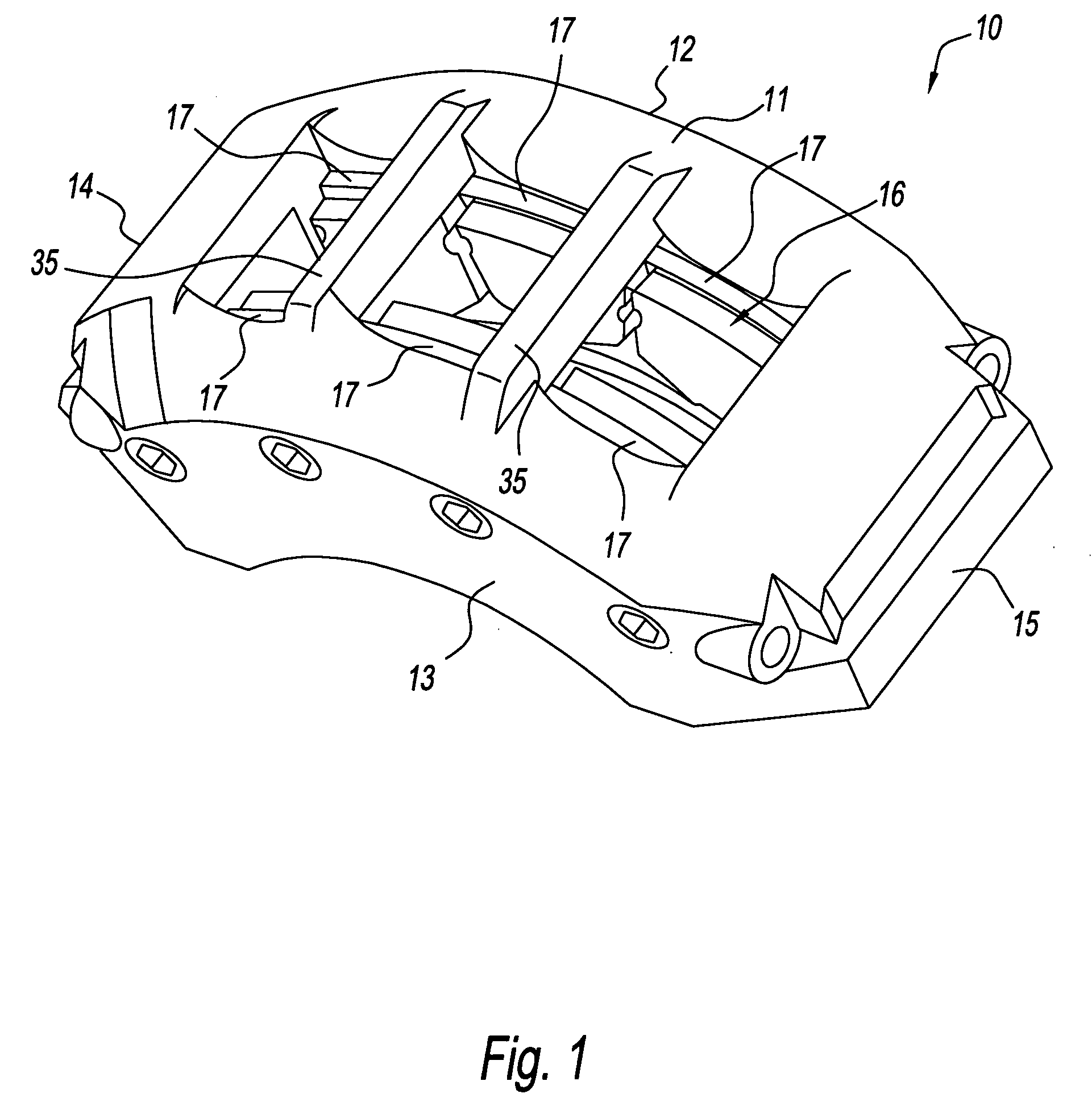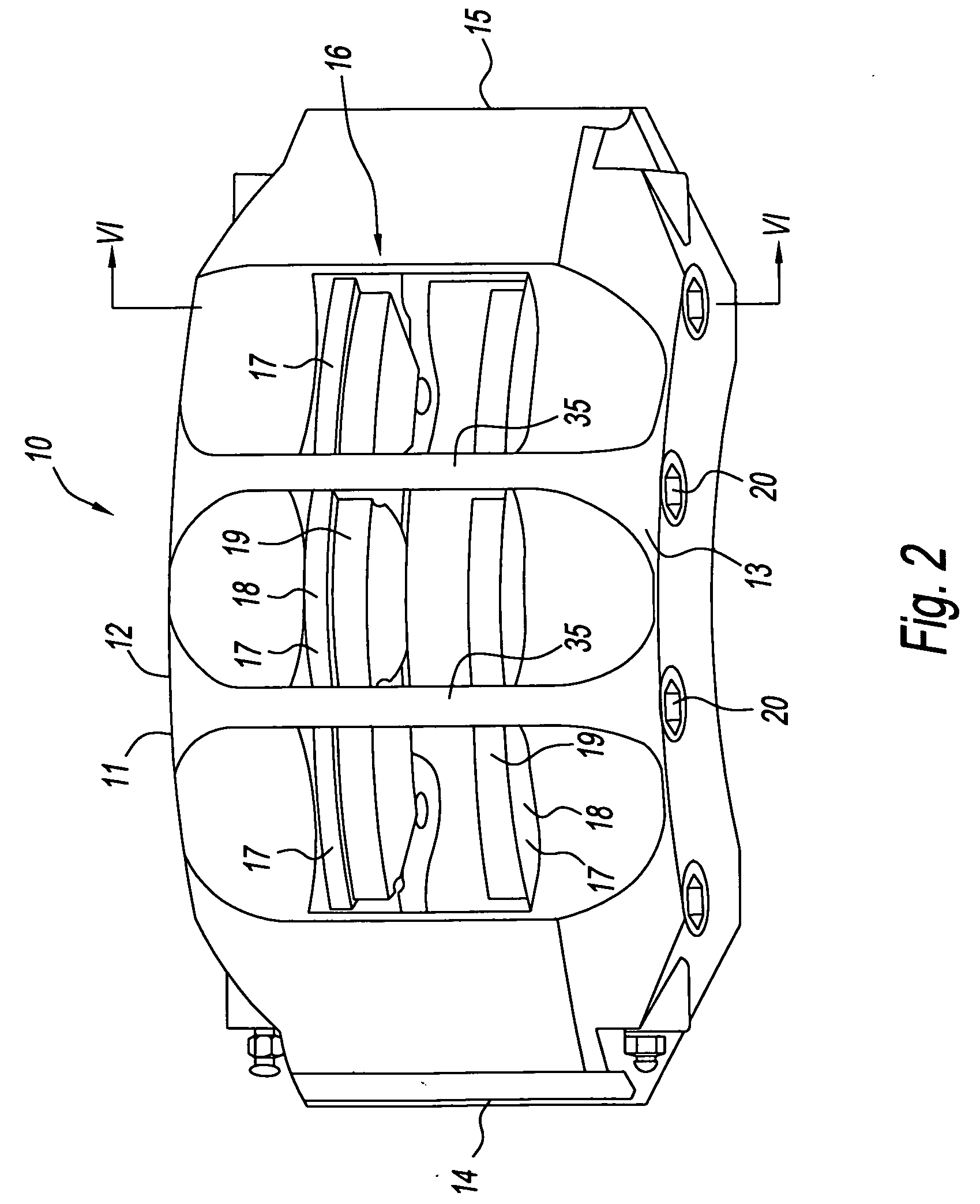Disc brake caliper
a disc brake and caliper technology, applied in the direction of axially engaging brakes, brake types, braking elements, etc., can solve the problems of not being as stiff as desirable, having an opposing piston caliper such as those described above, and complicating the manufacture and assembly process, so as to reduce the cost of the caliper, lessen the extent of tapered wear, and wear more evenly
- Summary
- Abstract
- Description
- Claims
- Application Information
AI Technical Summary
Benefits of technology
Problems solved by technology
Method used
Image
Examples
Embodiment Construction
[0038]FIG. 1 shows a disc brake caliper according to the invention as described above. The disc brake caliper 10 includes a housing 11 defining a pair of parallel side walls 12 and 13 and a pair of end walls 14 and 15 which extend transversely to the side walls 12 and 13 and are connected thereto. The housing 11 has a generally rectangular configuration in plan view and typically would be cast in a suitable metal such as iron or aluminum. The housing would then be machined as necessary.
[0039]The side walls 12 and 13 and the end walls 14 and 15 define an opening 16 in the housing 11. The opening 16 is of generally rectangular configuration and the internal surfaces of the opening defined by the side walls 12 and 13 are machined for mounting of a plurality of brake shoes 17 there against. In FIG. 1, three brake shoes 17 are mounted to each side wall 12 and 13 and each brake shoe consists of a metal backing plate 18 and a friction lining 19. While these parts of the brake shoes can be ...
PUM
 Login to View More
Login to View More Abstract
Description
Claims
Application Information
 Login to View More
Login to View More - R&D
- Intellectual Property
- Life Sciences
- Materials
- Tech Scout
- Unparalleled Data Quality
- Higher Quality Content
- 60% Fewer Hallucinations
Browse by: Latest US Patents, China's latest patents, Technical Efficacy Thesaurus, Application Domain, Technology Topic, Popular Technical Reports.
© 2025 PatSnap. All rights reserved.Legal|Privacy policy|Modern Slavery Act Transparency Statement|Sitemap|About US| Contact US: help@patsnap.com



